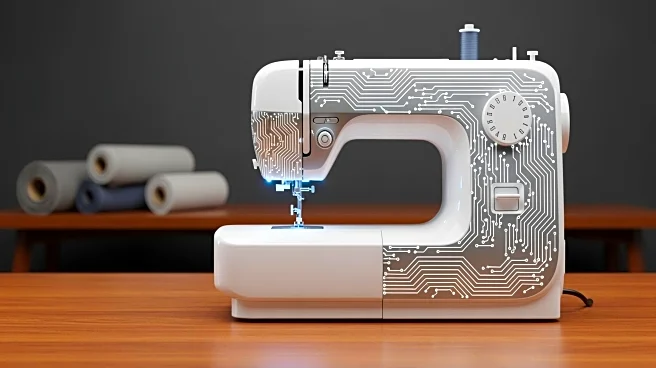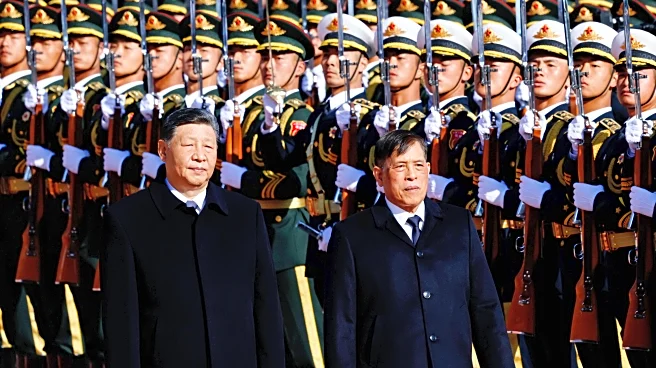What's Happening?
The fashion industry is navigating a complex landscape as it approaches 2026, marked by significant changes in trade, consumer behavior, and technology. U.S. tariffs have reshaped global trade dynamics,
compelling brands to adapt quickly. Consumers are increasingly prioritizing value and personal wellness, impacting spending patterns. The rapid advancement of artificial intelligence (AI) is transforming both the operational and consumer-facing aspects of the industry. According to a report by The Business of Fashion and McKinsey, these shifts are part of broader systemic changes that have been tracked over the past decade. The report highlights that while some industry leaders are pessimistic about the future, others see potential opportunities, particularly in markets like China.
Why It's Important?
The ongoing changes in the fashion industry have significant implications for U.S. businesses and the global market. The imposition of tariffs has increased costs across the supply chain, affecting pricing strategies and sourcing decisions. As AI becomes integral to business operations, companies must invest in technology and talent to remain competitive. This shift could lead to job transformations and the creation of new roles focused on AI-centric tasks. Additionally, the emphasis on consumer wellness and value is reshaping market dynamics, with mid-market brands gaining traction over traditional luxury players. These trends suggest a need for strategic adaptation to maintain market share and profitability.
What's Next?
Fashion companies are expected to continue adapting to these changes by optimizing their supply chains, investing in AI, and focusing on customer retention strategies. The industry may see increased collaboration between fashion and technology sectors, particularly in areas like smart eyewear and AI-driven shopping experiences. As brands navigate these challenges, those that can quickly adapt and innovate are likely to emerge as leaders. The focus on sustainability and ethical practices may also gain prominence as consumers become more conscious of their purchasing decisions.
Beyond the Headlines
The integration of AI into the fashion industry raises ethical and cultural considerations, particularly regarding data privacy and the potential for job displacement. As AI-driven tools become more prevalent, companies must balance technological advancements with the preservation of creativity and craftsmanship that define the fashion industry. Additionally, the shift towards wellness and value reflects broader societal changes, with consumers seeking products that align with their personal values and lifestyles.













